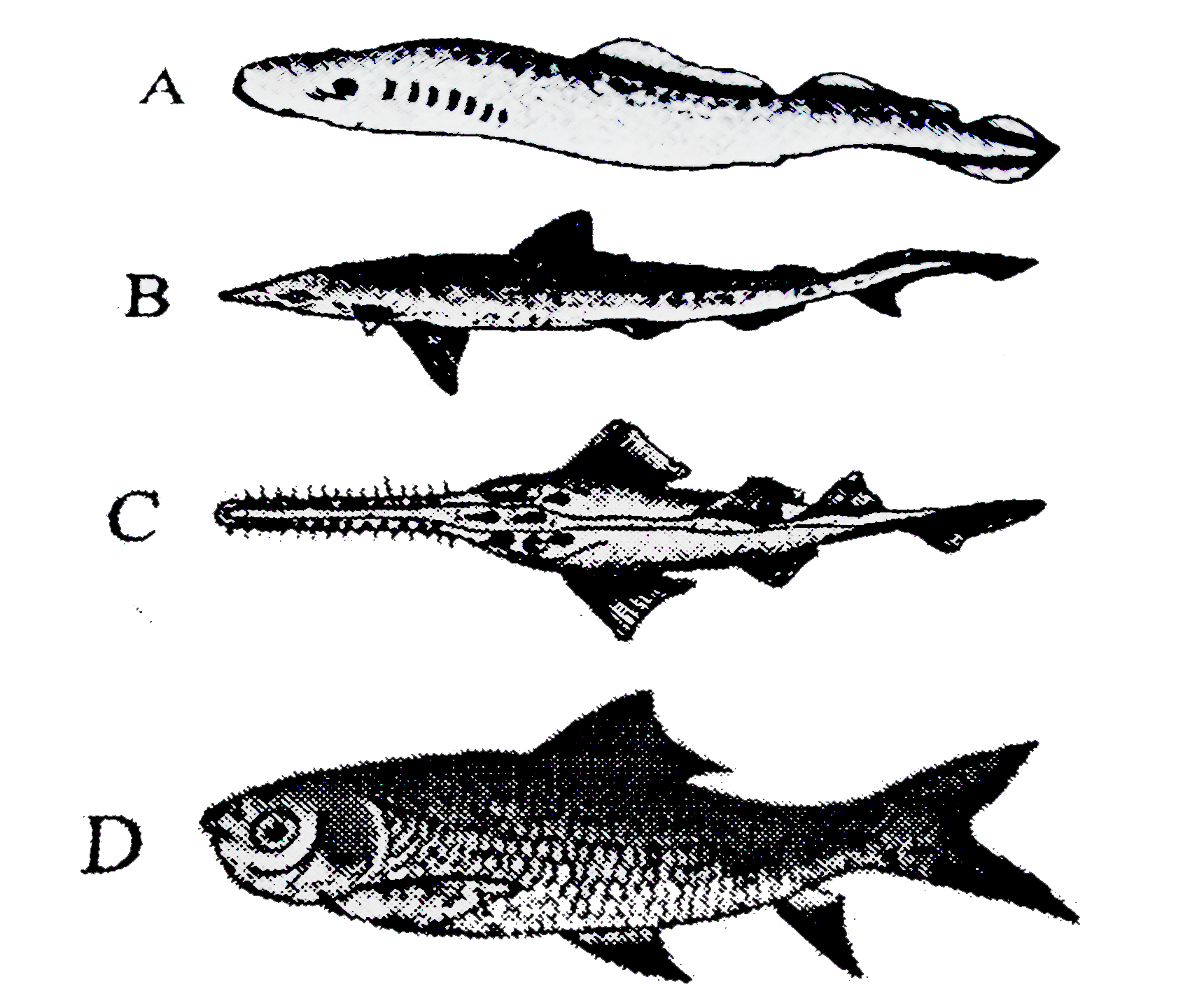Gill is monopectinate in
(a) Unio
(b) Chiton
(c) Octopus
(d) Pila
The correct Answer is:A
To solve the question "Gill is monopectinate in," we will analyze each option provided in the question step by step.
1. Understanding the Term "Monopectinate":
- Monopectinate gills refer to gills that have a single row of gill plates. This structure is important for the classification of certain mollusks.
2. Analyzing Each Option:
- Option A: Unio (Commonly known as Mussel)
- Unio has bipectinate gills, meaning it has two rows of gill plates. Therefore, it does not fit the criterion of monopectinate.
- Option B: Chiton
- Chitons possess multipectinate gills, which means they have multiple rows of interlocking gills. This also does not meet the monopectinate classification.
- Option C: Octopus
- Octopuses have feather-like gills, which are not classified as monopectinate. They have a different structure suited for their respiratory needs.
- Option D: Pila (Commonly known as Snail)
- Pila has monopectinate gills, characterized by a single row of gill plates. This matches the definition we are looking for.
3. Conclusion:
- After analyzing all the options, we find that the correct answer is D. Pila, as it is the only organism listed that has monopectinate gills.
Final Answer:
Gill is monopectinate in Pila (D).
---
- Monopectinate gills refer to gills that have a single row of gill plates. This structure is important for the classification of certain mollusks.
- Option A: Unio (Commonly known as Mussel)
- Unio has bipectinate gills, meaning it has two rows of gill plates. Therefore, it does not fit the criterion of monopectinate.
- Option B: Chiton
- Chitons possess multipectinate gills, which means they have multiple rows of interlocking gills. This also does not meet the monopectinate classification.
- Option C: Octopus
- Octopuses have feather-like gills, which are not classified as monopectinate. They have a different structure suited for their respiratory needs.
- Option D: Pila (Commonly known as Snail)
- Pila has monopectinate gills, characterized by a single row of gill plates. This matches the definition we are looking for.
- After analyzing all the options, we find that the correct answer is D. Pila, as it is the only organism listed that has monopectinate gills.
Gill is monopectinate in Pila (D).
Topper's Solved these Questions
Similar Questions
Knowledge Check
Gill slits function in :
ArespirationBcirculationCfood trappingDboth (a) and ( c)Which of the following statements is/are correct or incorrect regarding Class Amphibia?
(i) Body is divisible into head and trunk. Tail is present in some amphibians.
(ii) Show respiration by gills, lungs and through skin.
(iii) Has scales in all its members.
(iv) Can lead dual life (aquatic and terrestrial)
(v) Has eyelids.AAll are correctB(i) and (iv) are correctCOnly (iii) is incorrectDOnly (ii) is incorrect.
Gill fungi are
View SolutionGills are found in
View SolutionAppearance of ancestral characters in the new borns, such as tail, gill slits, etc. are known as
View SolutionChoose the correct statements
A) Uric acid is converted into allantoin by the action of uricase enzyme, in humans
B) Most of the ammonia is lost as ammonium ions across the epithelium of gills, in bony fishes
C) Trimethylamine oxide protects body proteins from the damaging effect of uric acid in cartilaginous fishes
View SolutionGive the answer of following questions by observatios from given figures:

(i). Which fish has air bladder?
(ii) which fish is known as saw fish?
(iii) which fish is cartilaginous fish?
(iv). Which animal is ectoparasite on true fishes?
(v) Which fish has paired fins?
(vi) which fishh has body skeleton?
(vii) Which fish has 4-pairs of gills?
(viii) Whch fis has operculum?
(ix) Which fishes are viviparous?
(x) Which fish lives in fresh water?
View SolutionGills of a mushroom take part in
View Solution
